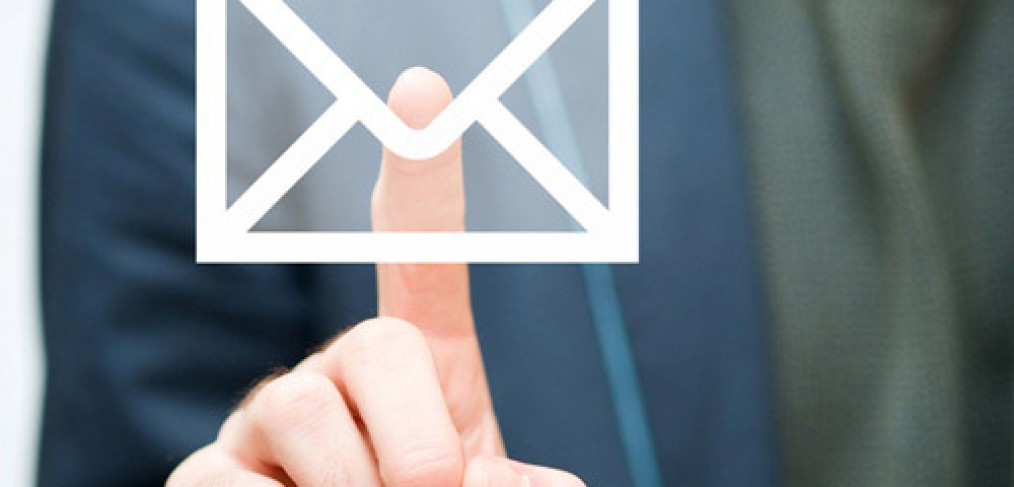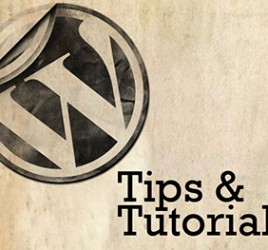
Email Usability
The Science Of Keeping It Short & Sweet
Great advise written by Ros Hodgekiss / Campaign Monitor
You’ve probably heard the advice, ‘Keep your email campaign short and sweet’, often followed by, ‘… because no-one’s going to read loads of copy, anyway’. As much as this seems like commonsense, we’ve all seen clients attempt to cram in as much information as possible, oblivious to reason. I believe this is largely due to another school of thought, which goes along the lines of, “My subscribers have signed up because they obviously want to read all about my brand values and 5 year plan.” With a lack of hard evidence to the contrary on hand, this can be an frustrating argument to dismiss.
See no email…
I was skimming through Jakob Nielsen’s research recently and came across a little gem in the form of an eyetracking heatmap. Based on data collected from recipients of an email newsletter, it denotes the areas where they looked the most in red and the least in blue:

From: ‘Email Newsletters: Surviving Inbox Congestion’ – Jakob Nielsen’s Alertbox, June 12, 2006
Note the emphasis on reading the first two words of the headlines, followed by diminishing interest in the body copy. As the email extends downward, interest in the content rapidly drops off.
If this doesn’t prove how fickle the average subscriber is, then there’s more. Based on this research, Jakob observed that:
“…the average time allocated to a newsletter after opening it was only 51 seconds. “Reading” is not even the right word, since participants fully read only 19% of newsletters. The predominant user behavior was scanning. Often, users didn’t even scan the entire newsletter: 35% of the time, participants only skimmed a small part of the newsletter or glanced at the content.”
Ouch. Just when you thought you could get away with adding at least a tiny introduction to your newsletter, Jacob throws in the following salvo:
“People were highly inclined to skip the introductory blah-blah text in newsletters. Although this text was only three lines long on average, our eyetracking recordings revealed that 67% of users had zero fixations within newsletter introductions.”
It looks like we’ll be keeping our emails to the point this season, hey?
What can we learn from this?
You’re probably speed-reading this blog post, so we’ll get to the good stuff. Here are a couple of tips for getting the important bits of your email read:
- Keep it short – Interest in the content of an email diminishes as the email extends below the fold (as backed up by this study), so cut the copy and keep the most important points of the message near the top.
- Optimize your headlines – As the first two words of a headline are the most important, keep them informational. For example, a headline like “3 tips for improving email usability and response rates” could be rephrased as, “Email usability: 3 tips for improving your response rates”.
- Get to the point – Most readers will skip any long-winded greetings or introductory text, so decide if it’s worth including. If an introduction is necessary, avoid adding any important information to this section.
- Focus the message – Where possible, avoid covering too many topics and keep the message simple. You’re only going to have the readers attention for a few seconds, so make it count by using a standout call-to-action.
- Make it scan-friendly – Limit body copy to easily-readable paragraphs, preferably under 60 characters in width. Selectively use images to reinforce your message, as images often take less time to understand than words.
- Align to the left – Notice how little attention the right-hand column of the email above is getting? That’s because readers of left-to-right languages (like English) are accustomed to scanning from the top-left first. Keep this in mind when designing two- or more column layouts.
Finally, your email design may only get an average of 51 seconds of fame per reader (if it gets ‘read’ at all). How will you make the most of it?
Original Blog > http://www.campaignmonitor.com/blog/post/3383/email-usability-keeping-your-email-newsletters-short-and-sweet/

